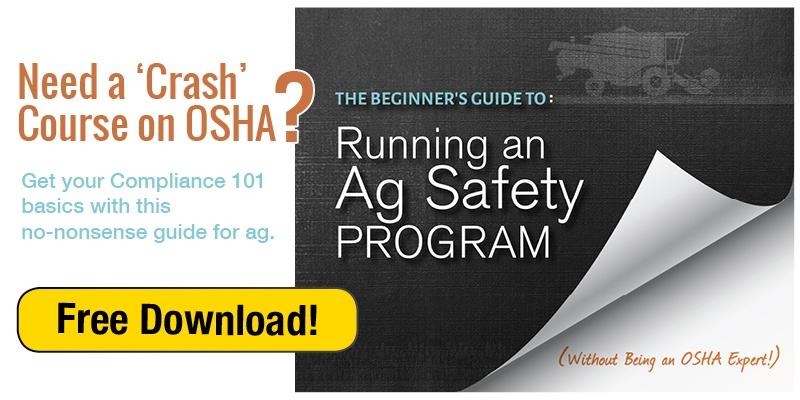For agribusiness owners considering options for employee safety training, the question often arises--Will videos alone satisfy OSHA requirements, or do I have to hire a safety expert to come on site and conduct some kind of formal training?
Depending on your operation and objectives, a safety contractor might make sense, but compliance shouldn’t be the only factor. After all, a video-training program, if comprehensive enough, can meet OSHA's requirements for compliance.
Here’s what you need to know...

Videos vs. Live Training
In-person training does have important advantages like one-to-one Q&A. But in ag operations, when efficiency and cost-effectiveness impact every operational decision, video training offers unique benefits.
- When it comes to cost, videos tend to be less expensive than hiring or contracting with a full-time safety expert.
- Videos give employees the ability to control the pace of their personal training. They can even rewind and watch them again, if needed.
- Unlike live training, videos ensure each worker consistently receives the same information and instruction.
- Web-enabled safety-training videos in particular, compared to a “come one, come all” lunchroom video session, allow employees to attend classes when and where it’s convenient for them on an individual basis—even on a 15-minute break in the field using a smartphone or tablet.
- Additionally, anytime, anywhere viewing means group safety meetings can be far more efficient and productive. With concise, engaging videos that are 15 minutes or so in duration, employees can discuss and troubleshoot safety issues specific to their workplace. These discussions enhance the value and significantly increase retention.
- Many of today's integrated production methods are spread over large geographic areas, and may even be in multiple states. These sites are often segregated for biosecurity reasons and employees from some sites are intentionally kept away from other operations. Providing web-based training reinforces biosecurity procedures and brings the training to the person, rather than everyone having to meet at the exact same time in a common area.
Video Training’s Big Compliance Caveat
In summary, the answer is “Yes,” safety videos without an expert providing the training can meet OSHA compliance, but only as part of a comprehensive program.
It’s important to remember that for OSHA compliance, you need to verify and document that employees completed the training and truly understand what they learned. This documentation, just like injury reports, safety policies, procedures, etc., is the kind of confirmation that OSHA inspectors will want to see if and when they do an on-site audit.
For more information, download The Beginner’s Guide to Running a Farm Safety Program, a FREE e-book from Good Day’s Work. It provides a five-step approach to build your OSHA-compliant ag safety training program.



